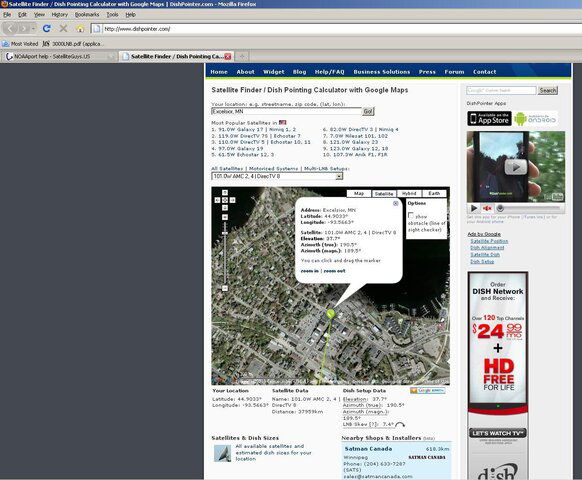Your not alone
[FONT=Arial, Helvetica]Hi I have been reading this and it seems your not alone b.glynn
I waited all the way for SES1 to come into position to get the NOAAPORT sig.
I even tried on the old AMC series satellites to get the signal, I had the exact same problem.
I used a 10' dish and a chapperal feed ,Norsat LNB and one of those satellite cards that can be installed in a computer. I can't say how much time I put into this and could not get a signal lock.
because I used a satellite card I could confirm that I was on the right bird because I could get (Golden eagle broadcasting) channel + a few others.
A link here to what is on ses1
SES 1 at 101.0°W - LyngSat
I could also get Galaxy 16 with the same setup.
After I tried everything I got serious and got out my spectrum analyzer and looked at the LNB output and found that the NOAAPORT signal was way too weak compared to Most of the others.
I am in South Iowa here a little bit closer to the satellite and couldn't get a lock.
Here is what I have determined, My antenna was at least 2 feet too small to get a data lock. They say is only takes and 8' antenna to get the signal but that's not true.
It will take
at least an 12' antenna to receive NOAAPORT .
I can confirm this because there was a NOAAPORT station in California and he had and 8' antenna and his station went dead, his data goes back to I think April of this year.
Also there is the ONLY internet known working NOAAPORT station in Cuba and I have talked the the operator of the station and they had to go to a bigger antenna as well due to the S/N ratio.
A web link to this is
Nbsp - Noaaport Broadcast System Processor
And last but not least any commercial manufactures include nothing smaller than a 12' antenna in their system package.
I used this setup to get data on off of Intellsat 9 (Geocast net) it worked just fine there.
Unforchantly that service don't have hardly any US based data it is all overseas and not very timely.
What you are seeing in your signal strength meter is nearby satellites very close to the frequency of interest, the receiver can't recognize the weak NOAAPORT signal over the stronger nearby ones so you get what looks like a strong signal but it is not, I will probably get disagreements about this.
A little bit about my satellite set up.
I have a GOES 12 GVAR data downlink and EMWIN. Have had the setup for 5 years.
-----------------------------------------------------------
Some more info on NOAAPORT
1. Downlink Frequency: 3956.5 MHz downlink frequency.
2. Symbol rate: 6.349 Megasymbols/sec
3. PIDs:
101 NWSTG
102 GOES
103 NWSTG2
104 4th/OCONUS/Nopt
----------------------------------------
Bottomline is recommend that you get a bigger antenna of at least 12' NO smaller.
If you do i'd like to know the outcome.
I am unwilling to put up another large antenna now.
[/FONT]





